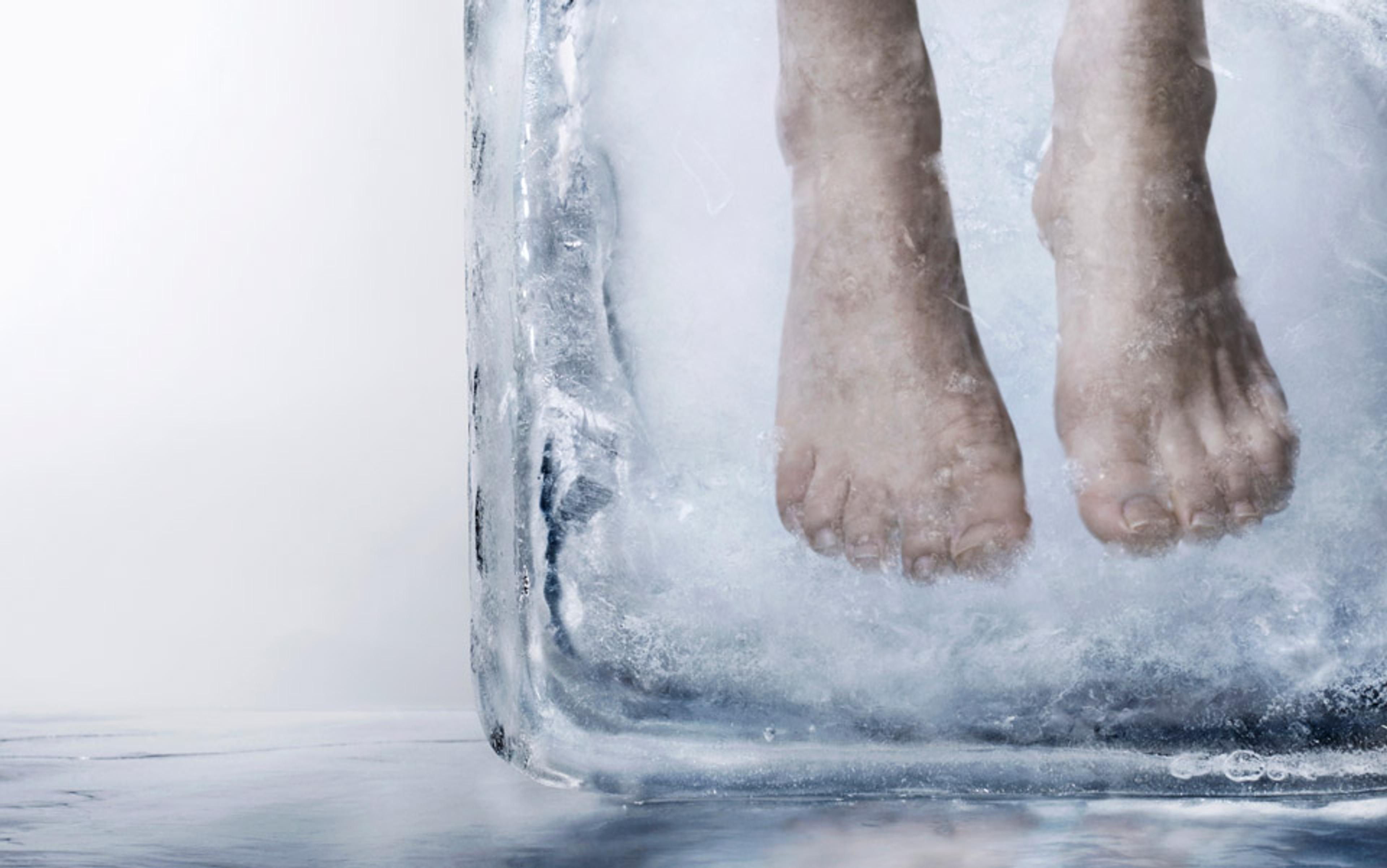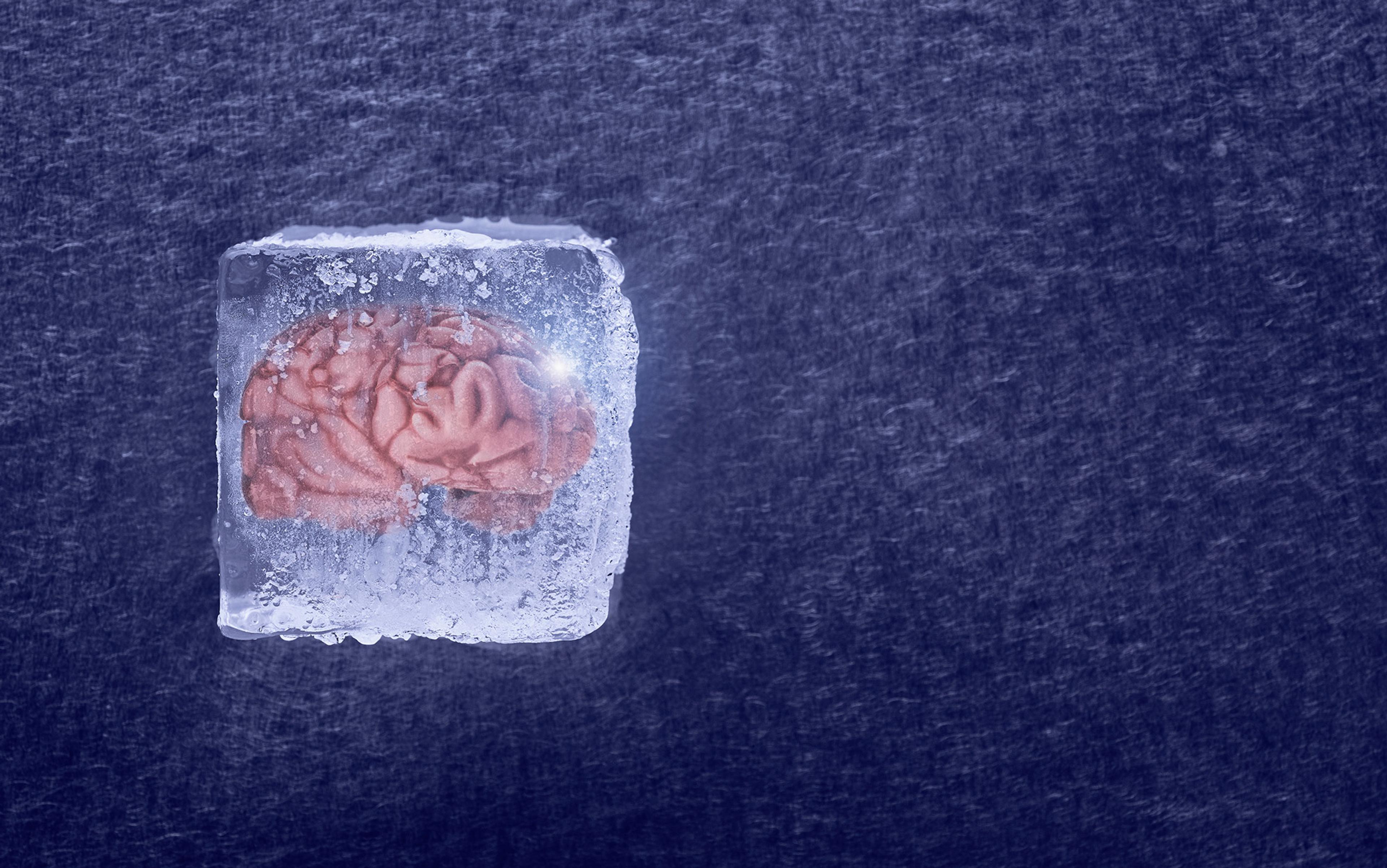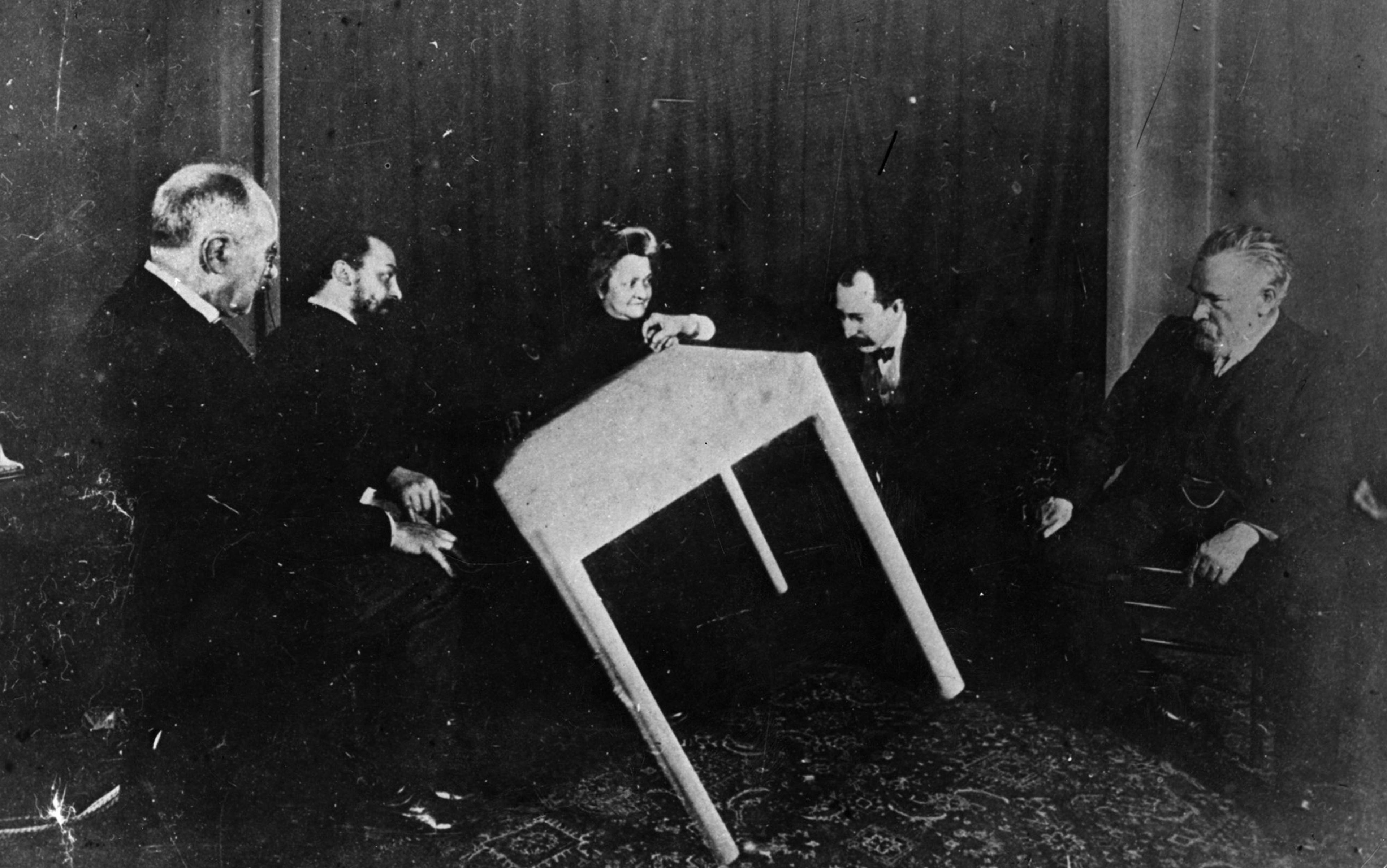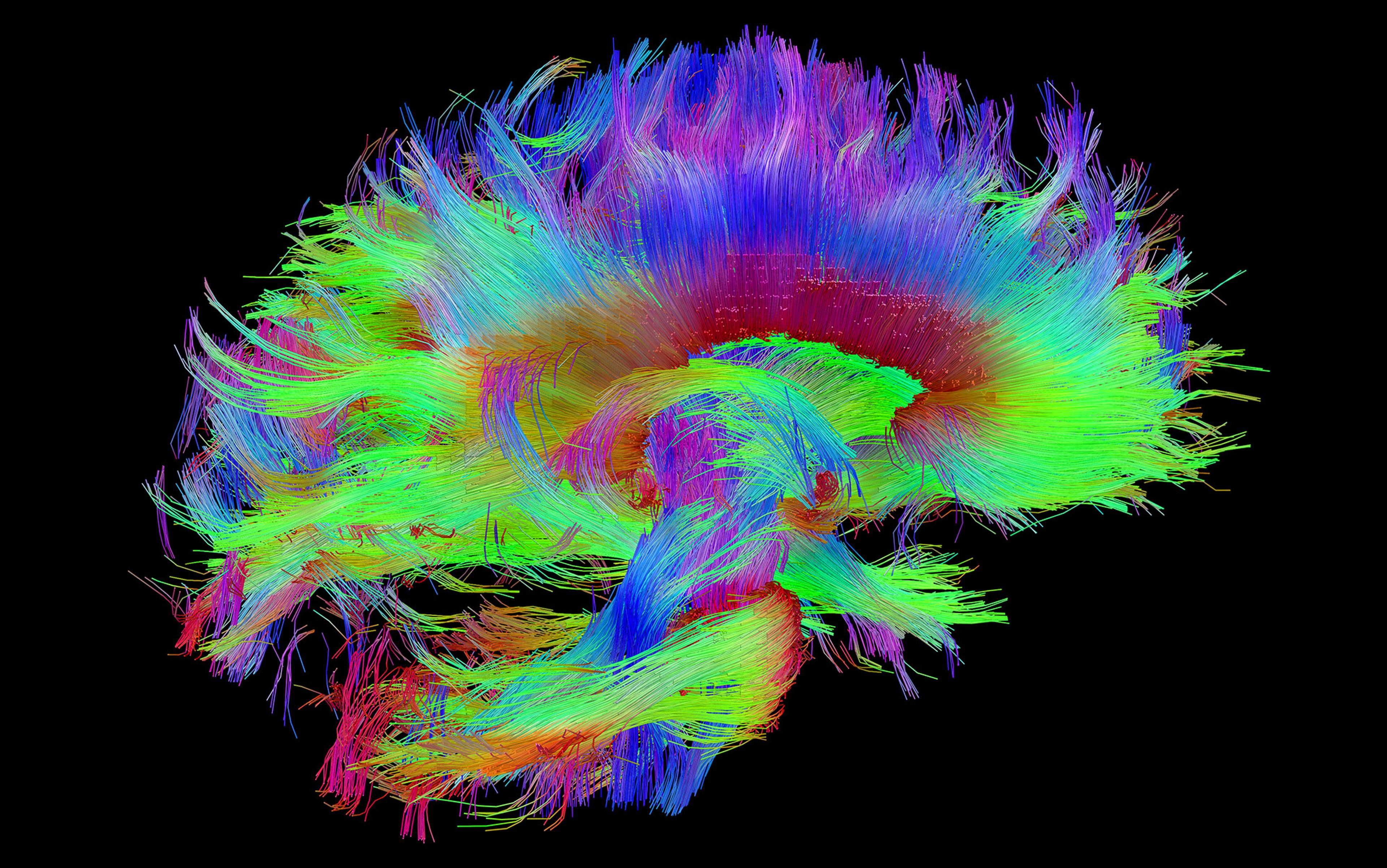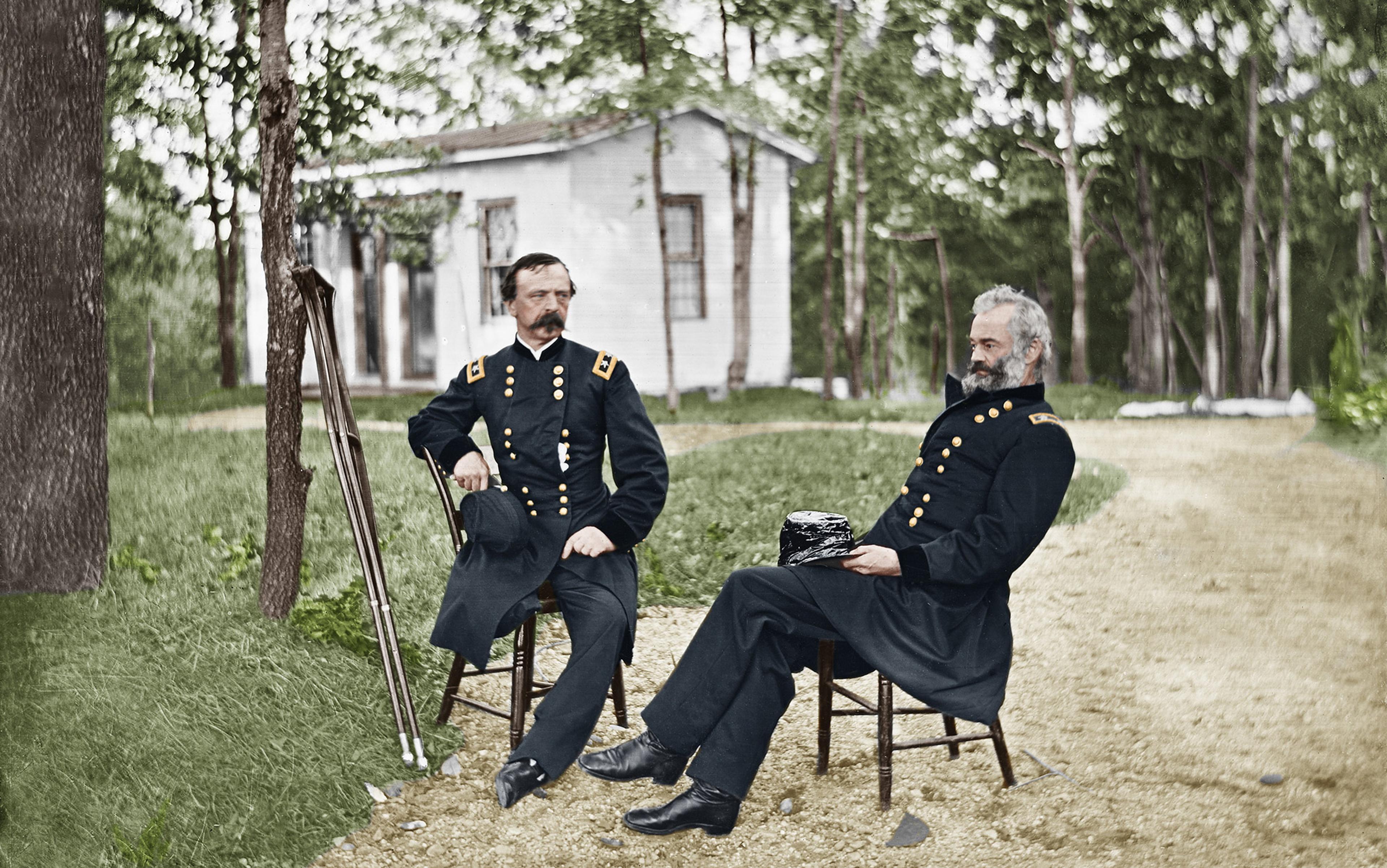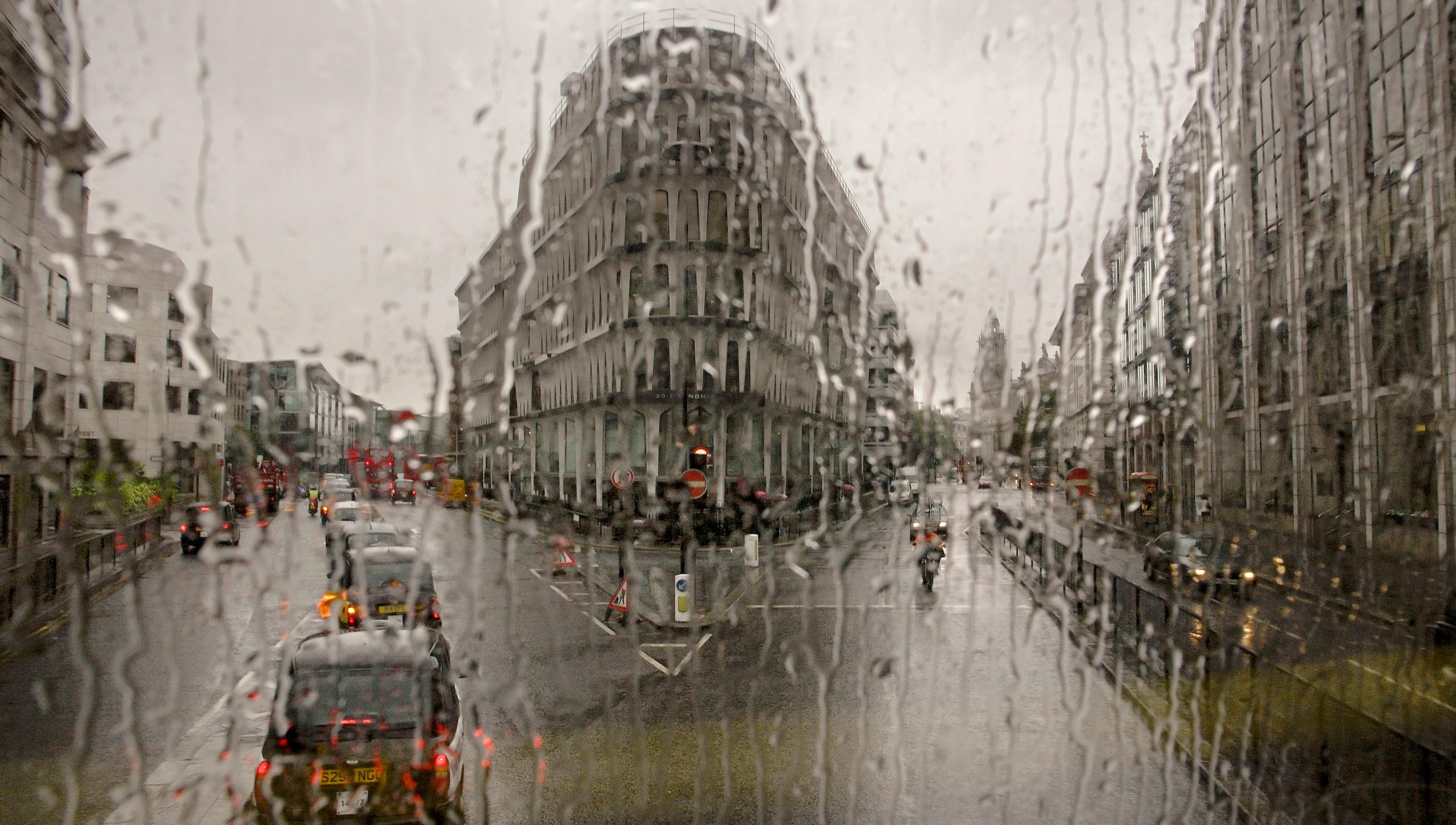Boulder, Colorado, 1989: the young Norwegian’s phone rang. On the line was his mother in Oslo, where it was already evening; dark with a November chill. She needed to tell him that his beloved grandfather had gone to take a short nap. But he had not woken up: he had had another heart attack in his sleep. He was dead.
The grandfather, Bredo Morstøl, had been a vital, vigorous man, a nature-lover who skied and painted well into old age. He had taken his grandson, Trygve Bauge, with him as soon as the boy was old enough, spending the summers fishing and hiking in the mountains, staying in the high-country cabin that Morstøl had built with his own hands. Not even an earlier heart attack had stopped this active, outdoor life. From his grandfather, Bauge had learnt independence and resilience. Neither man was inclined to give in to ill fortune. Now Morstøl himself could no longer fight back against the assaults of fate, but his grandson could.
The young man persuaded his distraught mother that burial or cremation would be premature, acts of resignation. Bauge had not given up hope of saving his grandfather, even though he was many thousands of miles away. As a child he had read about the idea of suspended animation in a popular science book he had found in his grandfather’s library. Ever since, he had been fascinated by the idea that the terminally ill or even the newly dead could be preserved at super-low temperatures. Then they could simply wait until the day came when technology was advanced enough to repair a failed heart, or even reverse the ravages of ageing itself. What was death, anyway? So Bauge gave his mother detailed instructions to deep-freeze grandpa Morstøl. Then they just had to get him to America.
The procedure for preserving whole human bodies by freezing is known as cryonics. Many believe it is an idea whose time has come. Their logic is simple. There are many diseases that cannot be cured by contemporary medicine, such as cancer or Alzheimer’s, so we cannot currently hope to delay death indefinitely. Yet scientific progress is rapid and even appears to be accelerating, to the extent that we might reasonably hope such diseases will find cures in the future. To have a shot at immortality, all we must do is reach that future.
Like most visionaries, his ambition inhabits a middle space between the prophetic and the pathological
For those who simply cannot stay alive long enough, freezing (more formally, ‘cryopreservation’) is a well-established way of delaying degeneration and keeping bodies fresh. Doing this to recently deceased humans — cryonics — is therefore an ambulance into the future, a way of transporting the terminally ill to a time and place where they might be healed. To those who are unconvinced that disease, old age and the damage done by freezing will ever be entirely curable, cryonicists such as Bauge say this: the odds of you rising again from the freezer might not be high, but they are surely better than the odds of you rising again from a small urn full of ashes.
The logic of cryonics is therefore a little like Pascal’s Wager. The 17th-century French philosopher Blaise Pascal argued that we don’t know whether God exists but, if He does, a pious life can earn you infinite reward in heaven in return for a relatively small investment in this world. Similarly, cryonicists admit that we can’t know for sure that medical science will become as all-powerful as they hope, but a relatively small financial investment in cryonics will at least buy you a shot at immortality, whereas spending your spare money on a nicer car or a bigger house promises only certain death.
Bauge did not know for sure that he could save his grandfather, but he thought he had a chance. In 1989 the only cryonics facilities were in the US. So he arranged for his grandfather to be flown across the Atlantic, in a steel casket packed with dry ice. Here he was transferred to one of the early cryonics companies, Trans Time in the San Francisco Bay Area, and immersed in liquid nitrogen at -196°C (-320°F), a temperature at which the natural processes of decay and putrefaction come to a halt. Bauge considered this a mere stopover; he had grander plans for rescuing his grandpa.
The young Norwegian’s dream was to found his own cryonics facility, one that could survive whatever perils the future might hold. No one could say how long it would be before the technology would be invented that could repair and reanimate his grandpa, so Bauge had to ensure he was safe until the time came. Having explored many options, he settled for Colorado and the Rocky Mountains, mostly because their inland location would permit a generous 30-minute warning if a nuclear attack was launched from submarines off either of America’s coastlines — he had no idea that the Cold War was coming to an end just as he was finalising his plans. He bought a plot of land above the little town of Nederland, a few miles southwest of — and 3,000ft above — the city of Boulder, with spectacular views and a climate not unlike his native Norway. There he started building.
Bauge was then and remains, at the age of 55, a visionary. Like most visionaries, his ambition inhabits a middle space between the prophetic and the pathological. On the one hand, his dream of a day when we will conquer death is rooted in the very real medical and scientific progress of previous centuries; on the other hand, his single-handed struggle with the Reaper feels like an inability to accept brute reality.
Exactly the same dichotomy permeates the cryonics movement. Its advocates argue using data and logic, yet their practices are broadly perceived as cultish and macabre. Cryonicists consider the rest of us to be deluded, walking blindly towards death, whereas the rest of us see them as fantasists, a little disturbed and a little disturbing, clinging to the corpses of their loved ones like Catholic peasants to a saint’s severed finger. One group or the other must have it badly wrong. The question is, which?
Bauge rigorously followed the logic of death-defiance. The main building he constructed was fireproof, bulletproof and designed to survive earthquakes and mudslides. Nothing would shift it from its outcrop on the windy mountainside. The structure was even designed to withstand nuclear attack (until Bauge decided to put in windows). Form was entirely sacrificed to function, creating a dull grey concrete block with peculiar angles, like something made by a clumsy toddler. In September 1993, Bauge deemed his facility, if not finished, at least habitable, and he and his mother moved in.
But he hadn’t yet built the cutting-edge cryonic storage chambers, so grandpa required temporary digs. These were the early days of cryonics and arrangements were makeshift. The young man quickly threw up a shed behind the main house, where Morstøl’s steel casket could be entombed in dry ice. The following year he even took on a new client, the recently deceased Al Campbell from Chicago, who joined grandpa Morstøl in the ice box. It seemed that both the idea and the practice of cryonics were making progress.
His ageing mother was now alone in the bunker, without mains electricity or running water, halfway up a snowy mountain with the corpses of her father and a stranger in her shed
In fact, the idea of cryopreserving humans has been around for a few centuries. Mary Shelley wrote a short story about it called ‘Roger Dodsworth: The Reanimated Englishman’ in 1826. Yet the technology required to attempt it has only been available for a few decades. It was only when Bauge was growing up, in the post-war boom years of the 1950s and ’60s when the future seemed so exciting and so imminent, that cryonics was able to establish itself as a philosophy and as a movement.
Its prophet was the American physicist Robert Ettinger. His book The Prospect of Immortality (1964) spelt out how ‘you and I, right now, have a chance to avoid permanent death’. In 1976 he went on to found the non-profit Cryonics Institute in Michigan, whose first frozen client was Ettinger’s own mother. The institute now safeguards 112 preserved human ‘patients’ accompanied by 91 pets. More than 500 paid-up members have reserved their spots in the deep-freeze, while the institute has also been joined by numerous similar organisations in the US and beyond.
Alas, soon after Bauge took on his second cryonic client, his plans for a facility of his own experienced a serious setback: he was deported. Although he had been in the US for 14 years, he had neither a visa nor a Green Card. Indeed, he rejected the very idea of either document on principle, believing them violations of the basic right to freedom of movement. The US immigration service was unmoved by his appeal to ideology, and put him on a plane back to Oslo. His ageing mother was now alone in the bunker, without mains electricity or running water, halfway up a snowy mountain with the corpses of her father and a stranger in her shed. When the Nederland newspaper Mountain-Ear reported on Bauge’s deportation, his unhappy mother lamented that she didn’t know what would now happen to the bodies.
The bodies! Suddenly the local reporter’s story had become a lot more interesting. Police and other town officials were soon examining the suspicious bunker with its cadavers in the cooler for evidence of ill deeds. Even after it was established that Bauge and family were not mass murderers, voices of disgust and outrage dominated the town council. Realising there were currently no legal grounds on which to stop makeshift cryonics centres, the town board passed a law prohibiting the storage of dead bodies on private property. Al Campbell’s family reclaimed his corpse, leaving Grandpa Morstøl alone in his icy tomb under threat of eviction.
Cryonics facilities in other states in the US had been through similar wrangles: Ettinger’s Cryonics Institute is legally designated as a cemetery. This is perhaps unsurprising, as the patients within are decidedly dead by all current legal standards. They have to be, as the processes of cryopreservation would kill anyone as surely as a bullet to the heart. Deep-freezing a human body stops all circulation and brain activity and causes substantial tissue damage. The technology does not currently exist to revive such a body or repair such damage. Cryopreservation can therefore only be done to the legally dead, or it would be murder.
For its advocates, this shows how completely society fails to understand what cryonics is trying to do. Central to the movement is the belief that many of those we bury are not really dead at all. Cryonicists point out that the technological advances of recent decades have forced us to redefine death. Once, death happened when the heart stopped beating, but then we learnt how to restart a heart. It is therefore now mostly defined as brain death. But we might also learn to restart a brain. In fact, this possibility is built into the definition: brain death is understood to be the irreversible end of brain activity. Of course, the question of what is or is not reversible is at least in part a function of our technology. What is permanent today might one day be curable.
One leading cryonics advocate, Aschwin de Wolf, puts it to me like this: ‘If the original state of the brain can be inferred and restored, cryonics patients are not dead … Their identities are still with us in an information-theoretical sense.’ Someone whose brain has stopped working will ordinarily be buried or burned, or they will have their organs harvested. But de Wolf, who edits Cryonics magazine and conducts research on neural cryobiology, believes that a person cannot be considered utterly gone so long as his brain has not yet turned to mush. If his neural networks are still intact, even if no longer active, then there is a sense in which he is still with us. We are therefore burying those who, in his view, are not yet dead.
If advocates such as Bauge and de Wolf could succeed in shifting the definition of death to apply only when the information stored in the brain is physically destroyed, the status of cryonics would change instantly. Instead of an eccentric form of burial, it would be a treatment. Those whose brains were still whole but no longer working would not be considered corpses, but would remain patients — and the only available means to stabilise their condition would be the deep freeze and a long wait for a future cure.
Indeed, if we accept the so-called ‘information-theoretic’ definition of death, then cryonics becomes a moral imperative. The hearts and minds of millions of people every year cease to function due to age and disease, yet for a few hours the structure of their brains remains largely intact. At that point, further degeneration could be halted by cryopreservation, opening up at least the possibility of future rehabilitation. Ettinger, the founder of cryonics, believed it was only a matter of time before the courts made freezing compulsory. Half a century on we still permit millions every year to rot, condemning them to eternal destruction.
But not Bredo Morstøl. His daughter, alone after Bauge’s deportation, was not about to concede defeat to local bureaucrats. She roused town residents to support her in opposing this illiberal intervention in her family affairs, winning considerable support in a region known for its sympathy for the radical individualist. The council conceded a ‘grandfather clause’: although the keeping of corpses was generally forbidden, bodies stored on private property prior to the ordinance were allowed to remain. Grandpa Morstøl was, in legal parlance, grandfathered in.
‘The will to live is the very essence of life,’ Bauge told me on the phone from his new home in Oslo. ‘If this is thwarted, we cannot be happy, we cannot be anything.’ The precondition for all ethics, for all action of any kind, is first and foremost that we stay alive. ‘This is the highest goal for any individual,’ he said. Bauge believes we are morally obliged to take responsibility for our own flourishing and to continue to flourish for as long as possible.
He has a clear hierarchy of possibilities for how this continuation might be achieved. Toward the bottom of the list is having children, which preserves a mere 50 per cent of one’s genetic material. Of course, one could have lots of children, so that more of one’s DNA was passed on, but in any given child it would be diluted and shuffled so that none of them would preserve a person’s distinct genetic individuality.

Trygve Bauge: ‘A day spent ice bathing and in the sauna is a day when you do not age’. Photo by Morten Holm / Scanpix
That could, however, be achieved by cloning, which is next on Bauge’s list as it would preserve 100 per cent of a person’s genes. This is the fallback option planned for his grandfather. In contrast to the Cryonics Institute, Bauge admits that his deep-frozen patient might just be dead. ‘Though it’s not black and white,’ he added; ‘to be clearly dead you have to be warm and dead — if someone is frozen, we can’t say for sure if they’re irrecoverably gone’. Still, he concedes that the freezing of his grandfather was ‘a bit of an experiment’, and not conducted in ideal conditions. The degree of deterioration and the amount of damage incurred by preservation make a full re-animation of the once virile outdoorsman ambitious to say the least. But keeping him on ice will at least preserve his genetic material so that it can be cloned, once again to manifest in manly form.
Bauge envisages a world in which we are engineered from birth to be freezable, so that if the worst should happen, we can immediately be supercooled to maximise our chances of successful repair
Yet Bauge concedes that this is still not real survival: cloning will not preserve someone’s memories; their personality as shaped not just by genes but also experience; their unique consciousness. This is what death claims when it eats away your brain. Unless, of course, you can be properly cryopreserved.
Bauge believes this will soon be possible. He sets his hopes not only on improving the freezing techniques, but also on improving us humans. Some creatures, such as tardigrades (also known as water bears), tiny water-dwelling creatures of extraordinary hardiness, can already survive being frozen. We must learn their genetic secrets and re-engineer our own DNA so we can perform the same trick. Bauge envisages a world in which we are engineered from birth to be freezable, so that if the worst should happen — being hit by a bus, for example — we can immediately be supercooled to maximise our chances of successful repair.
But top of Bauge’s list as the best option of all is simply to stay alive. One might think that those who have a backup plan (he himself is signed up with the Cryonics Institute founded by Ettinger) would be less worried about a piano falling on their heads than those of us without a Plan B. But in fact the reverse is the case: those signing up for cryopreservation services are also trying very hard to ensure they never need them.
De Wolf told me that ‘like most people with cryonics arrangements’ he has ‘a strong interest in life extension and rejuvenation research’. So he tries to eat healthily, exercise and avoid stress. Bauge follows a similar regime with a diet involving a large amount of bean sprouts (‘They are young organisms,’ he explained, ‘and therefore have vitamins and hormones that an ageing body cannot produce.’) And he stays fit through a hobby entirely in keeping with his interest in cryonics: ice bathing. ‘I intend to be frozen and so I’m preparing for it!’ he joked. He claims to have set the world record for ice bathing in open water (as opposed to in a tub of ice, which he argues is much easier) by staying in for one hour and four minutes, and he is proud of having founded a number of ice-bathing clubs around the world. ‘A day spent ice bathing and in the sauna,’ he said, ‘is a day when you do not age’.
Bauge’s plans to stay alive are not limited to diet and exercise: they extend to major engineering projects of which his Colorado bunker is only a modest prototype. He is currently designing medical parks with research, rejuvenation and cryonics facilities that would be protected against the existential threats that loom over our species, though he has yet to find backers. He points out that Norway has many miles of road tunnels under high mountains. If his parks were built in one of these, they would be impervious to pandemics, pollution, nuclear war and even meteor strikes. It is in such time capsules that far-sighted survivors such as Bauge could sleep out Armageddon and one day awaken to a new dawn.
This mix of apocalyptic and utopian thinking characterises the extreme life-extension movement in all its manifestations — and also betrays its true roots. Cryonics is a kind of eschatology, a vision of the End Time, in which earth-shattering events will precede the transcendence of mortality for the chosen few. This is a myth with a millennia-long history.
First will come an End Time of great tribulation and final battles, but this is only a prelude to the creation of paradise on earth
Central to such views is the belief that we are living in a time uniquely important in world history; a time when great forces clash with the potential for both utter destruction and a new beginning. Faith in cryonics does not depend on a coming apocalypse, but its advocates tend to be deeply concerned about one. For Bauge, who grew up during the Cold War, nuclear Armageddon remains the catastrophe of choice. For younger cryonicists, it might be climate change or a new epidemic, or — for the true digital native — the technological singularity, the moment when we create an artificial super-intelligence that might or might not be benign.
The promise of cryonics is that those who succeed in surviving or averting this catastrophe will find themselves transformed. In their new world, science will have solved the problem of death. The frozen bodies will all be thawed, their diseases cured. Ettinger described the reanimated man thus:
After awakening, he may already be again young and virile, having been rejuvenated while unconscious … In any case, he will have the physique of a Charles Atlas if he wants it, and his weary and faded wife, if she chooses, may rival Miss Universe. Much more important, they will be gradually improved in mentality and personality … the future will reveal a wonderful world indeed, a vista to excite the mind and thrill the heart.
Those familiar with the Christian New Testament will recognise this vision immediately. First will come an End Time of great tribulation and final battles, but this is only a prelude to the creation of paradise on earth. This paradise will be enjoyed by the faithful dead, reanimated and restored. St Paul described the resurrected body thus: ‘It is sown in corruption; it is raised in incorruption: it is sown in dishonour; it is raised in glory: it is sown in weakness; it is raised in power … For this corruptible must put on incorruption, and this mortal must put on immortality.’ (1 Corinthians 15)
The common vision is one of transcendence and transformation, the common themes those of fear and hope. This vision reflects our deep desire to leave behind the parlous state of mortality, in which some fatal incident might occur any day and one day surely will. We do not cope well with such existential uncertainty, and so we are more than willing to accept stories of how, very soon, everything will be settled and the problem of death will be solved once and for all.
Is it therefore mad for Trygve Bauge to believe his grandpa might live again? Or for Aschwin de Wolf to expect that Robert Ettinger and his mother will one day rise from their icy tombs? If it is, then it is a kind of madness to which most humans in history have succumbed. It is no madder than the belief that one Jesus of Nazareth spent three days dead only to be raised and once again walk among his followers. Nor is it madder than those who for thousands of years worshipped Osiris in the belief he could reawaken the fallen, or those who underwent the rites of the mystery cults that promised an exit pass for the underworld.
But it is not much less mad either. Cryonics wears a cloak of science and reason, but at its heart is faith. Consider for a moment its assumptions: that technological progress will continue unabated or even accelerate; that all diseases are curable and ageing itself reversible; that the people of the distant future would choose to reawaken all these frozen corpses; that the world could then sustain a population boosted by these reanimated ancestors. These views are themselves not hypotheses from within science, but part of the ideology that supports it: the belief in progress, the transcendence of nature and the possibility of utopia. This is a belief that the Enlightenment project of science owes to apocalyptic religion.
When cryonicists and other techno-utopians argue that their claims are entirely within the Enlightenment tradition, they are therefore correct. These claims really are only extensions of the pervasive belief that we can use science and reason to become masters of our destiny. After all, science and reason really have brought with them progress: in the developed world, we do live longer and more comfortably than most of our forebears.
This is what explains the paradox of cryonics, the strange way that it appears at the same time so rational and so outlandish. Its adherents can argue very reasonably because their premises of technological progress and increasing prosperity are those on which our whole society is based. Yet when we extrapolate from these premises as the cryonicists do, they are revealed for what they are: articles of faith — expressions of hope, not logic. The answer to the question of whether cryonics is reasonable or fantastical is therefore: both.
Meanwhile, grandpa Morstøl still waits in his steel tomb, though not entirely alone. Bauge’s mother long ago returned to Oslo, leaving the monthly job of topping up the dry ice to a contractor, now known locally as ‘the Iceman’. And in 2001 the town of Nederland fully embraced its unique part in the history of cryonics, launching an annual festival: the Frozen Dead Guy Days. It continues to flourish, now in its eleventh year; a kind of Halloween Mardi Gras in which Grandpa Morstøl-lookalike competitions vie for attention with cryonics workshops and a hearse parade.
But the biggest draw is the sightseeing trip to Bauge’s bunker and his — now somewhat revamped — cryopreservation shed, where Morstøl awaits his resurrection. The people of Nederland seem to revel in the contradiction frozen in their midst. They mock cryonics while marking it, and honour Bauge and his grandpa both as heroes and as fools. They make a carnival of mortality, celebrating the paradox that our belief that we can thwart death is both entirely reasonable and entirely ridiculous.
